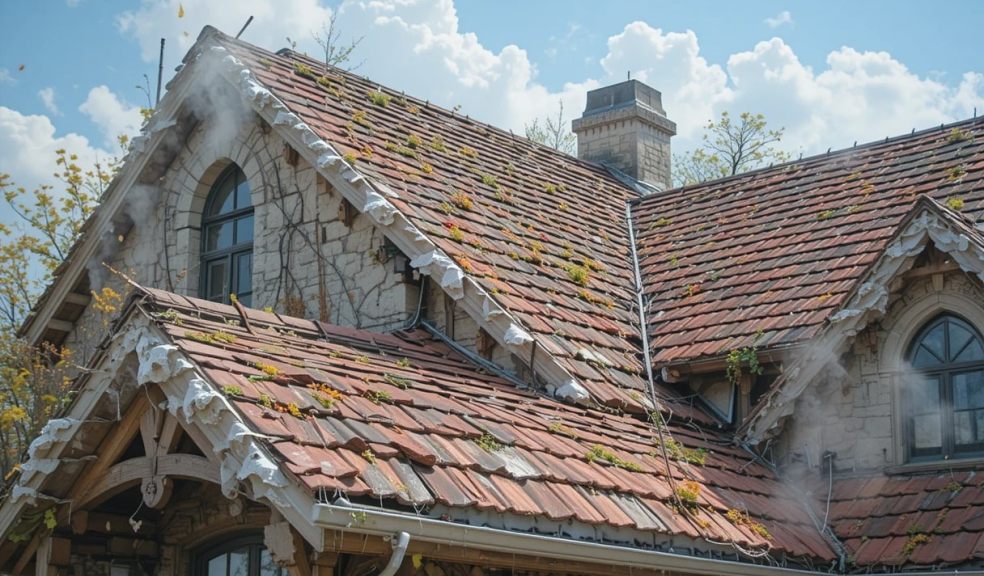
How to Make Your Roof Last 50 Years (or More!)
Let’s be honest, roofs aren’t the most glamorous part of our homes. Most of us barely think about them until, suddenly, there’s a leak to deal with or a stain slowly creeping across the ceiling. Yet, above our heads, our trusty roofs soldier on day after day, taking whatever the British weather wants to throw at them. If you treat yours right, it could last for fifty years, maybe even longer.
But what’s the trick to a truly long-lasting roof? It’s not down to good fortune or some secret builder’s code. Really, it comes down to using the right materials, showing your roof a bit of love every now and then, and knowing when you’d be wise to pick up the phone and call in the pros. In this guide, I’ll walk you through the steps you can take to keep your roof going strong, year after year from sensible choices at the start, to a bit of annual TLC that’s well worth the effort.
It All Starts with the Right Materials
Before a single tile goes down, your roof’s destiny is, to a large extent, decided by what it’s made from. Trying to save some cash here might seem wise at the time, but it can (and usually does) lead to more hassle and higher bills a few years down the line. If you can, invest in quality at the start, you really won’t regret it.
Slate and Clay Tiles: Stubbornly Long-Lasting
There’s a reason so many old terraced houses are still wearing their original slate or clay-tiled hats after all these years. These classic materials really do go the distance.
Natural Slate: Nothing much beats genuine Welsh slate. It laughs in the face of fire, rot and insects, and if looked after, can still be on your roof in 100 years. Yes, it’s pricier at the outset, but on a year-by-year basis, it’s hard to argue with.
Clay Tiles: Likewise, clay is a superstar when it comes to durability. These tiles take our damp and frosty weather in their stride and regularly see 60 years or more. Plus, they come in a decent range of shapes and colours, so you can keep things looking tidy.
Metal Roofs: Modern and Mighty
If you fancy a slightly more up-to-date look, metal roofs are tough, light and very low on fuss.
Copper & Zinc: These two develop a pleasing patina as they age, and can see out 80 to 100 years with hardly any bother. Not bad, right?
Aluminium & Steel: Sit a bit lower on the price and longevity scales, but you'll still get a solid 40–70 years from them, provided they’re properly protected against the weather.
Concrete Tiles: Reliable All-Rounders
For a good balance between value and longevity, modern concrete tiles do a very decent job. You might get 40 to 50 years with a little care, and today’s options can even mimic the look of pricier materials.
A final tip: buy the best you can afford. It may sting a bit at first, but headaches and big repair bills down the line are a lot worse.
It’s the Little Things: Maintenance Counts for So Much
Even the toughest roof will start to sulk if you ignore it. The good news is, taking care of yours doesn’t have to be a big chore. A handful of simple tasks each year can make the world of difference.
1. Don’t Ignore the Gutters
There’s no getting away from it. Cleaning the gutters is a job most of us put off, but it matters. Clogged gutters mean water going where it shouldn’t, creeping under tiles, soaking timber, and freezing solid in winter, making existing problems even worse. Get into the routine of clearing gutters twice a year (spring and autumn is best) and you’ll be way ahead of the curve.
2. Moss and Algae, A Quiet Menace
A rooftop dusted with bright green moss may look cosy, but those little clumps soak up water and hold it tight against your tiles. That’s not good news, especially when winter sets in and everything freezes. It’s worth brushing off moss gently or using a suitable remover. Just leave the pressure washer in the garage, heavy jets of water can loosen tiles and do more harm than good.
3. Keep Trees in Line
Love a leafy garden? Fair enough but trees with branches that dangle over your roof can cause chaos when the wind picks up. Overhanging branches scrape at tiles, snap off in storms, and rain leaves straight into the gutters. Trimming branches back away from your roof keeps things safer and much simpler.
Nip Small Issues in the Bud
Here’s the golden rule: don’t let minor roof niggles fester, they never fix themselves! The sooner you fix little problems, the less likely you’ll have to fork out for something major later on.
Scan for Cracked or Slipped Tiles
After windy or stormy weather, do a quick scan from the ground (binoculars help). If you spot anything out of place or broken, get it replaced sharpish. Even a single dodgy tile can leave your home exposed to leaks and further damage.
Watch the Flashings
Flashings, those metal bits tucked round chimneys, skylights and edges are prime spots for trouble. If they come loose or get rusty, water’s got a direct path inside. Keep an eye out for any gaps or peeling, and call for help if you spot anything amiss.
Look Up in the Loft
Take a peek in the loft every now and then, especially if it’s been absolutely chucking it down. Damp patches, mysterious stains or the odd shaft of sunlight up there mean something’s up. Catching these early is so much easier (and cheaper) than waiting until the ceiling below starts to sag.
Build a British-Weather-Proof Roof
It’s no secret: roofs over here put up with a lot. From endless rain to surprise heatwaves and sudden cold snaps, you need your roof to be ready to cope.
Let the Air Flow
It might sound weird, but good ventilation in your loft is crucial. It lets hot air escape in the summer and stops damp building up in winter. Ventilation also keeps the temperature more consistent, so you avoid nasty surprises like ice dams, and it’s great for the longevity of your roofing materials.
Don’t Skip Protective Finishes
Certain roofs, especially flat ones or concrete tiles love a bit of extra protection. Adding a sealant every so often keeps water out, reflects the sun, and helps slow the growth of anything green and unwanted.
Sometimes, You Need the Pros
There’s lots you can spot from the ground, but every few years (or after a particularly bad storm), it pays to get a roofer up for a proper once-over. A pro will spot subtle problems early, from loose nails to worn-out tiles or unidentified soft patches that could signal rot. It’s a small effort compared to the peace of mind and big repair savings you get in return.
Give Your Roof the Best Shot at Fifty Years
Roofs aren’t built to last forever but with some thoughtful choices, a touch of regular maintenance and a bit of help from the experts, yours really can go the distance. Start with the sturdiest materials you can manage, keep on top of the easy stuff, and never wait too long to sort out small problems.
It may not be the most thrilling part of homeownership, but it’s definitely one of the most satisfying, knowing you’ve done your bit to keep your home snug, safe and dry, come rain or shine, decade after decade.

















